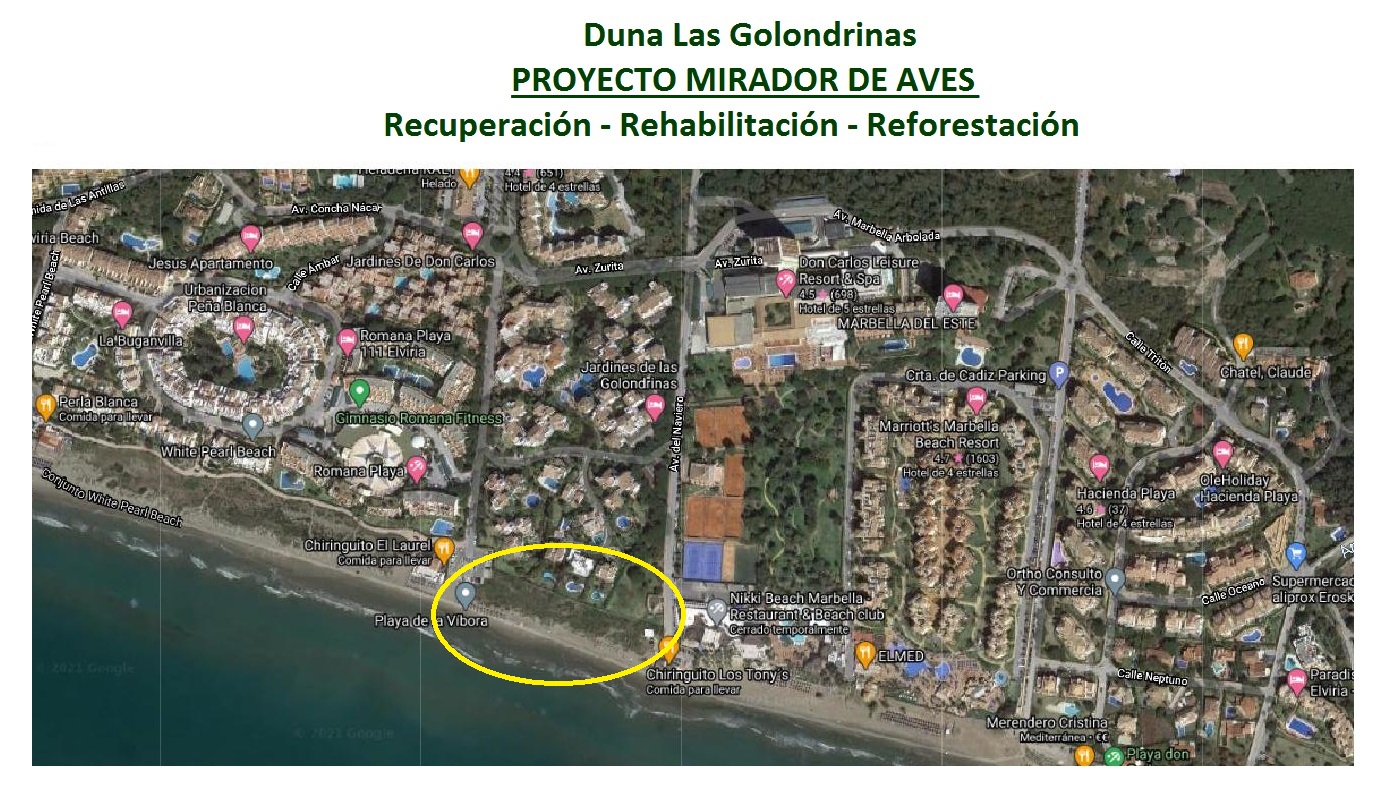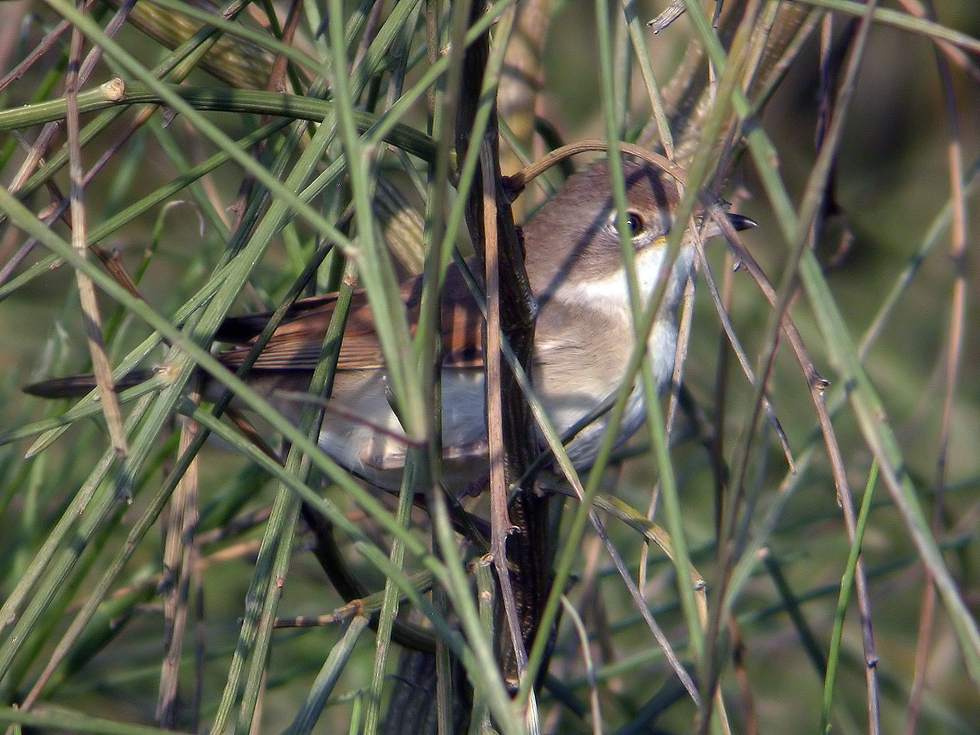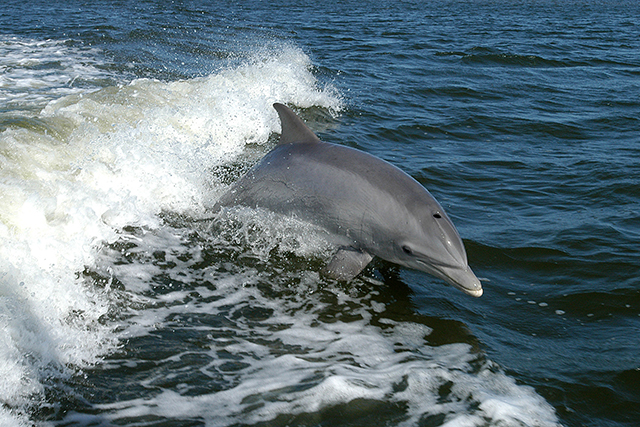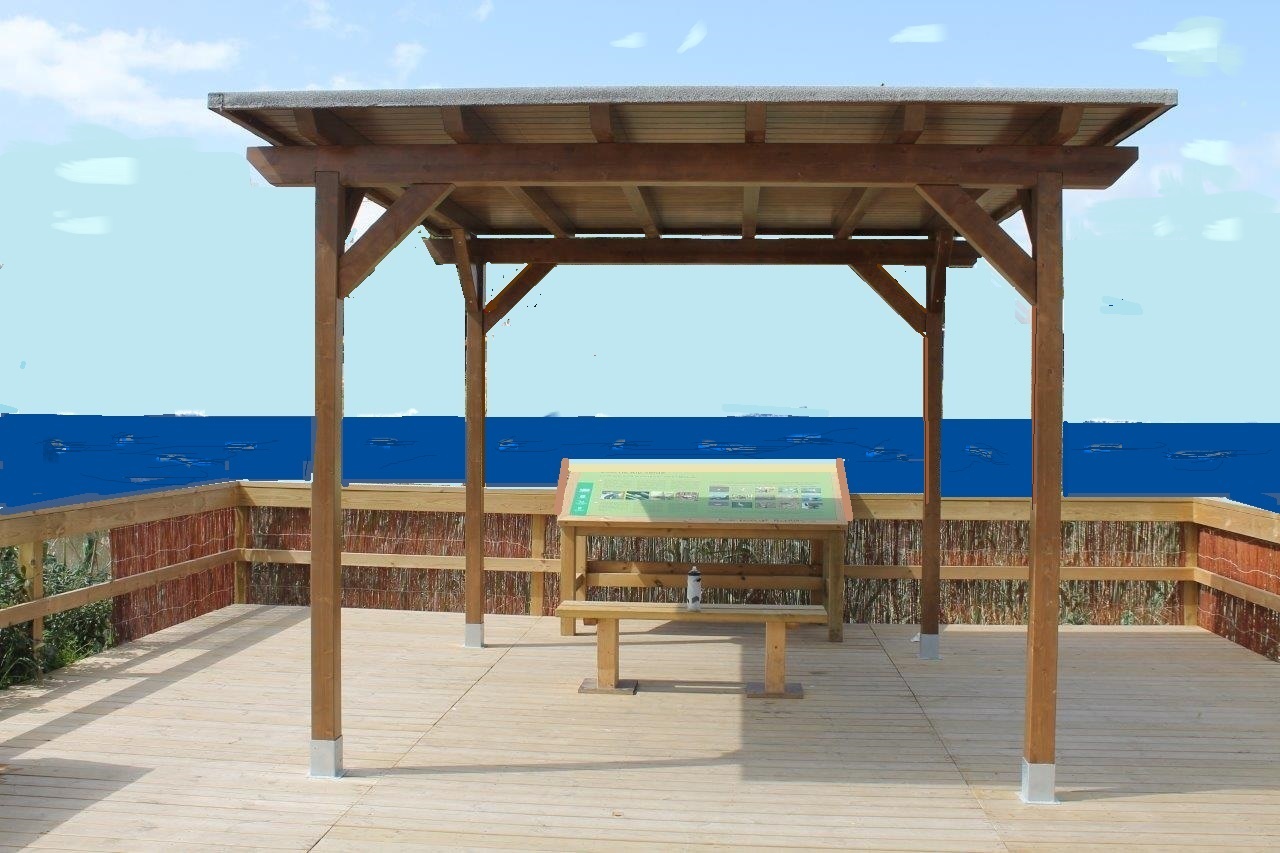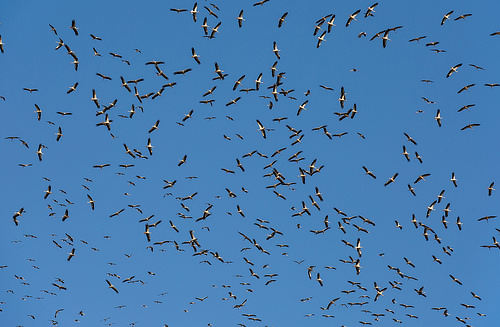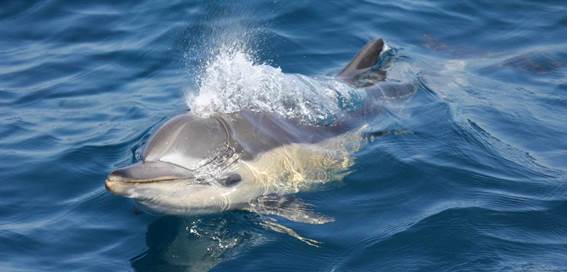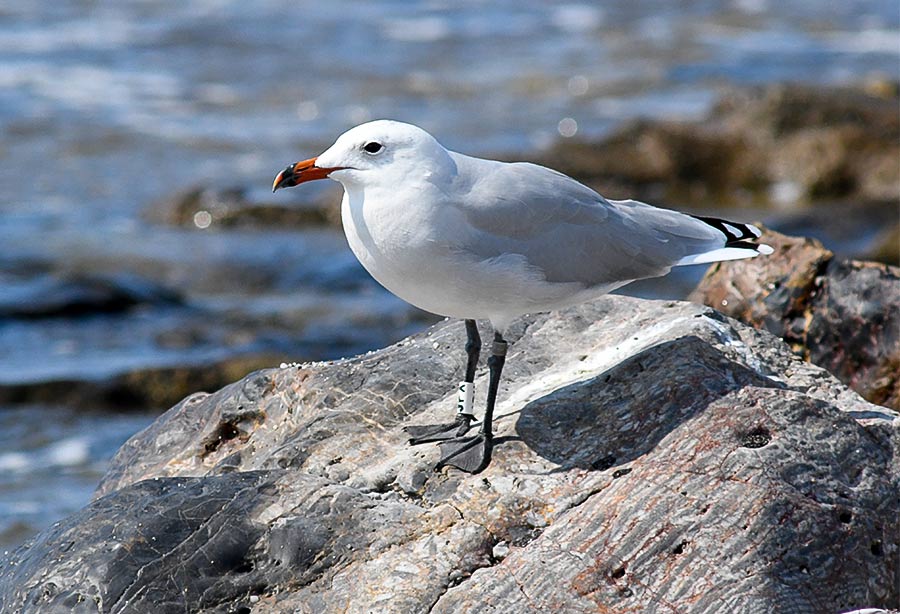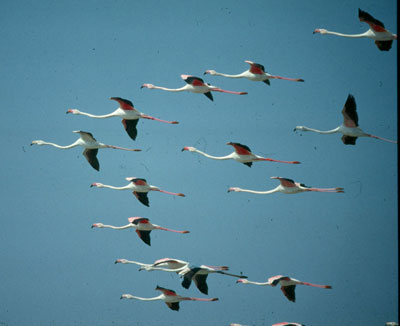Projects to promote
PROJECT FOR AN OBSERVATORY IN THE “LAS GOLONDRINAS” DUNE, Las Chapas-Elviria
AN OBSERVATORY to STUDY BIRD AND SEA FAUNA OVERLOOKING THE ALBORAN SEA
There is a great diversity of resident birds and others that use the dunes on the Marbella dune ecosystems frequently. In addition, due to its proximity to the Strait of Gibraltar and the African continent and because of our mild winters, many species over-winter here and others stop-over while migrating. The Alboran Sea washes the coast of Marbella and provides food for numerous seabirds and various species of cetaceans.
Currently, the dune area “Las Golondrinas” is very degraded. However, thanks to its elevation of several meters above sea level, it is the best place for a marine fauna observatory. ProDunas Marbella is working to repair its degraded state and our objective is to achieve complete reforestation with native species. Once this has been achieved, the birds and their song will be fill the dune.
We want to take advantage of this height above sea level to show off the biodiversity of the birds that live in the dunes. We propose installing a look-out point here. We want to stimulate the interest of everyone who walks along the boardwalk to the environment they are in, to find out about the species that can be seen in and from the dunes and thus better understand the entire coastal system (dune-beach-sea). In this way, users can see the full coastal ecosystems as more than just a recreational area. We encourage you to take a visual tour from the sea to the dunes, from sea level to several meters in the air above them.
With luck and patience you may even see a dolphin near the coast. The Alboran Sea is home to three species: the smaller Common dolphin (Delphinus delphis) the Striped dolphin (Stenella coeruleoalba), and the Bottlenose dolphin (Tursiops truncatus) which is somewhat larger. In addition, as the Alboran Sea is the only outlet to the Atlantic, through the Strait of Gibraltar, some imposing species such as Sperm whales (Physeter macrocephlus) and Fin whales (Balaenoptera physalus) travel through these waters in two migratory phases every year, out and then back to the more protected waters of the Mediterranean. Although these species are rarely seen from the coast, it is good to know that they are close by.
As for seabirds, residents like the Yellow-legged gull (Laurus michahellis), the Black-headed gull (Chroicocephalus ridibundus), the common migratory Mediteranean gull, the common Razonbill (Alca troda) and the Northern gannet (Morus bassanus) can all be seen surfing the waves, as well as flying or feeding, although some of them prefer to be farther out to sea.
Closer to the coast species such as the Sanderling (Calidris alba) and the Kentish plover (Charadrius alexandrinus) that feed on small organisms buried in the silt near the shoreline on sandy beaches can be seen. The Kentish plover is here year round and uses our beaches for nesting. For this, it needs sandy beaches which is why the beach to dune transition area must be conserved with great care so as to provide adequate nesting sites for them.
In the dune area, the passerines or songbirds are in the majority. Some commonly seen species are the Goldfinch (Carduelis carduelis), the Greenfinch (Carduelis chloris), the European Serin (Serrinus serrinus), the common Linnet (Carduelis cannabina) and the Eurasian Siskin (Carduelis spinus) or Chaffinch (Fringilla coelebs). In addition to singing, these birds usually feed on grains and seeds and perform a work of great ecological value by spreading them and thus promoting the development of more vegetation.
As well as these species, we have some more unusual ones such as Hoopoe (Upupa epops), Thekla’s lark (Galerida theklae), and even small birds of prey such as the Common Kestrel (Falco tinnunculus). Hoopoes look like woodpeckers and are frequently seen in dune environments. Their reddish feathers and black and white stripes on the wings and back make it very special. This species is increasingly common throughout the year despite the fact that it has previously only been a summer visitor to Marbella. The Crested Lark is also in this group. It has a distinctive squat appearance and a small crest on its head; it is resident and can be spotted quite easily. Kestrels are the most impressive specimens and remind us of a wilder nature. They are hunters and their presence is important to control the population of small mammals.
So you can clearly see that our coastal areas are rich in biodiversity. We want to emphasize this by the establishment of the look-out point. We hope that it will be somewhere to sit and rest, as well as to learn and enjoy watching the fauna for anyone who goes out to the beaches, that it will awaken in them an interest in conservation and in nature.
abubillas (Upupa epops), la cogujada montesina (Galerida theklae), e incluso pequeñas rapaces como el cernícalo vulgar (Falco tinnunculus). Las abubillas nos recuerdan a los pájaros carpinteros y se ven frecuentemente en los entornos dunares. Su penacho rojizo y su coloración a bandas negras y blancas en las alas y espalda, la hacen muy especial. Esta especie es cada vez más frecuente encontrarla durante todo el año a pesar de que es un ave estival en Marbella. La cogujada (Galerida cristata) es también una paseriforme pero cuenta con un distintivo aspecto rechoncho y una pequeña cresta en la cabeza, es residente y puede verse con cierta facilidad. Los cernícalos, pueden ser los ejemplares más imponentes y nos transportan a una naturaleza salvaje. Son cazadores y su presencia es importante para mantener las poblaciones de pequeños mamíferos en niveles adecuados.
Salta a la vista que las zonas costeras son ricas en biodiversidad. Queremos recalcarlo con la instauración de este mirador. Esperamos que sea un punto de reflexión, aprendizaje y disfrute para los usuarios de las playas y despertar en ellos el interés por la conservación y la naturaleza.
Do you want to receive our Newsletter?
Do you want to become a member or be our friend of the dunes?
Asociación ProDunas Marbella
The Association works tirelessly for the defence and preservation of the unique ecosystems that survive in the natural sand dune environments in the Province of Málaga; promotes the protection of native flora and small wildlife; promotes recovery, rehabilitation and conservation of interesting biodiversity of sand dunes areas in the municipality of Marbella.

